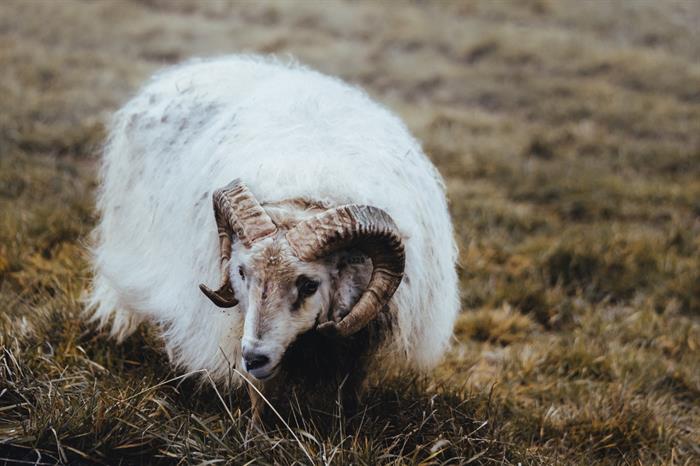May is a rather intense time in Iceland as it marks the high lambing season. Over a five-week period, farmers run a bit of a marathon performance, assisting their ewes in bringing new lambs to the world. Most of them are going on an ultrasound scan so the farmers know in advance which expect one, twins (often!), triplets or more, and can prepare accordingly. While some of the births go smoothly without any assistance, some ewes need a little help in the effort to give birth safely. Lambs are supposed to come out with their front legs and head first, but they sometimes decide otherwise, or can need assistance to start breathing.
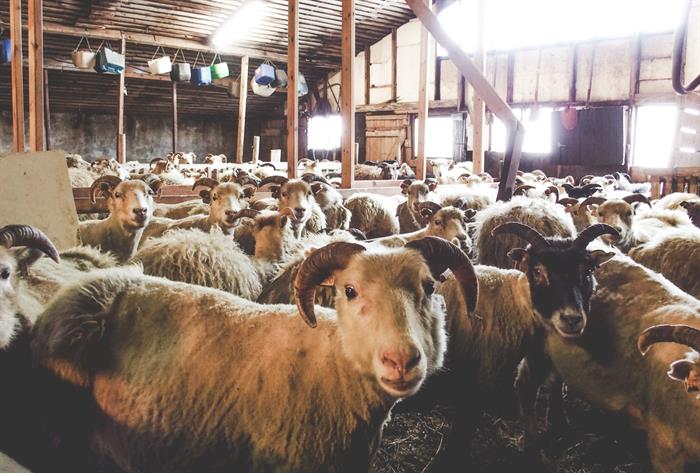
Lambing season at our partners
This season, we visited two of our partners during the lambing season, who happily invite their guests to witness and share this unique time of the year with them, and even participate to some of the lambing duties.
Sölvanes is a sheep farm located in the fjord of Skagafjörður in Northwest Iceland, offering a splendid view over Mount Mælifellshnjúkur, 1.138m. There, Eydís runs a farm of 260 sheep along with horses, a few chickens, cats and a dog, and a guesthouse for travellers. This year, Eydís and her family are expecting around 460 lambs, some of which were born before our eyes!
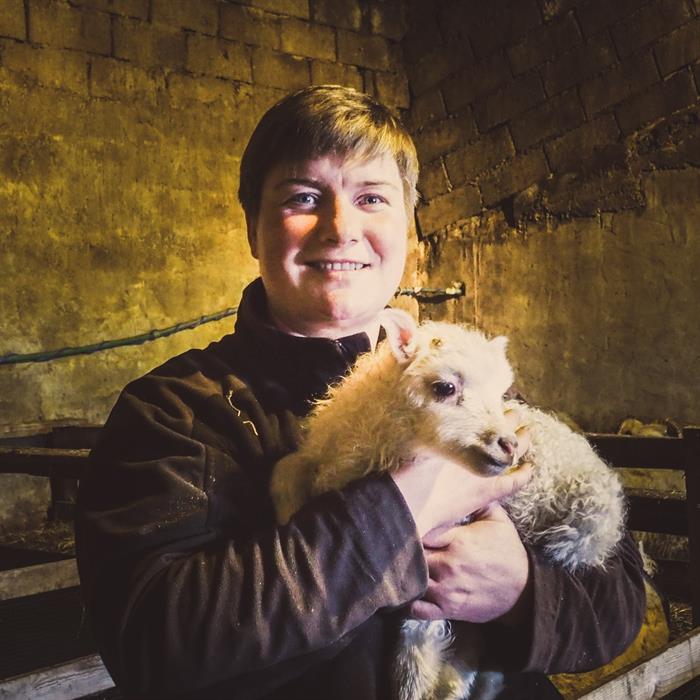
Eydís and one of her newest additions, 1 day old!
Magnus runs Stóra-Ásgeirsá, a sheep farm and horse rental in Víðidalur valley, in the region of Húnaþing vestra, in Northwest Iceland. We joined Maggi and his 200 sheep as he welcomed a bunch of new lambs that morning, after a short night of sleep.
“I was about to go get some rest when I saw a ewe ready to give birth, and once the birth was completed, I saw the hooves of a lamb appear at another ewe’s rear, and another one, and so on.”
First steps into the world
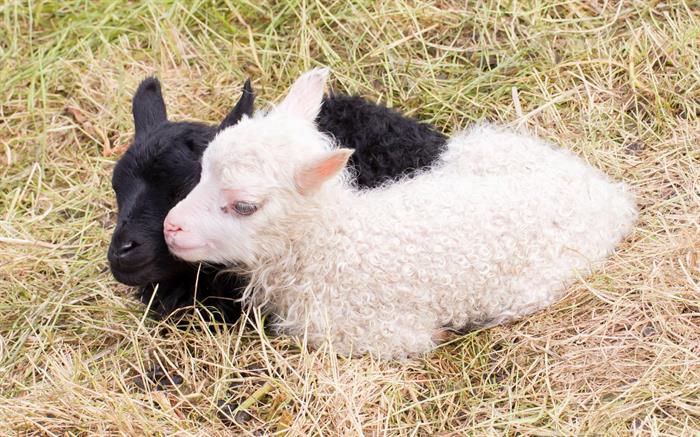
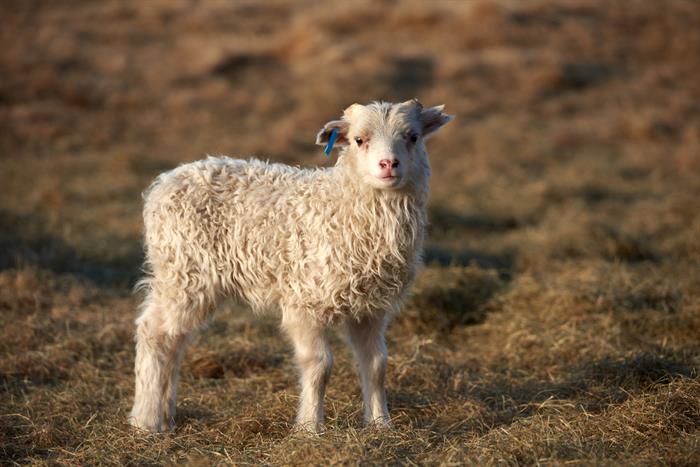
Once the lambs are born, they move with their mother into comfy boxes, where the dry hay protects them from all kind of bacteria. The first minutes are crucial for the lamb, revealing the acceptation or rejection from the mother. The ewe can be a bit confused by the birth and might not know yet what to do with a lamb. This is common with first-time mothers, who need a little time to take on their new role.
“Ewe lambs usually reach puberty their first fall so the one-year old ewes are now having their first lamb, often just one. Every year we have around 35 new ewes to maintain our livestock, meaning we choose the 35 best females from all our lambs as the new generation.”
The amniotic fluid or salty water can help arouse the maternal instinct. A good sign is when the ewe starts cleaning and drying off the lamb, after what both are calling each other, training to recognize each other’s voices in the middle of a big herd. Soon they try to get on their feet and stand. And fall down. And stand…
“This always reminds us how imperfect humans are when they come to the world. We need close to one year to do our first steps while these little buddies do it right after five minutes.”
The lamb then tries to find the mother’s teats. You know they are being successful when they start wagging their tail as they get their first milk. When asked if they always get the same emotion when welcoming a new lamb, although they have been doing it thousands of times, the answer is yes.
“Otherwise, we wouldn’t have continued in this.”
Challenges and miracles
It is not always rosy and there are challenging and tough moments, for instance when the lambs do not make it during the birth despite all the efforts to save them, or when the ewe is too weak to survive. Luckily, this represents a very small percentage each year. Sometimes, for some reason, the ewe won't or can't feed her lambs by herself, this is when farmers step in to give a second chance to the rejected or abandoned lambs (or triplet!), by assigning them to an adopting mother or by bottle feeding them.
“Adoption is easier if both of the sheep are lambing at the same time.”
Other challenges show up along the way like the endless battle with foxes:
“Now there is a fox running around our fields, a fox hunter might have to come as foxes are killing some of the little lambs”.
When the lambs get bigger, and as soon as the weather is warm enough, the young families head off to the hayfield. Later in Summer, they are let free to roam the mountains and graze until Réttir, the annual sheep round-up, comes in the fall.
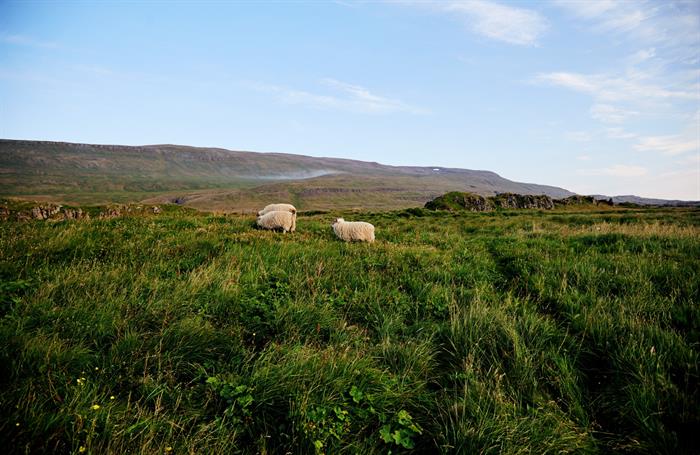
The lambing season requires ongoing attention, farmers being on duty day and night, regularly checking the status in the sheephouse, and putting their sleep on hold for a month. We admire them for still having the patience to share with us their job and passion! What we will remember the most at the end is the sincere love the farmers have for their animals and how they ensure that those are treated with kindness, care, and affection. Did we tell you Magnus treats the lambs to a little yoghurt when they are born?!
Find out everything about our visit to Magnus and Eydis under our "Lambing season" story highlight on Instagram!
